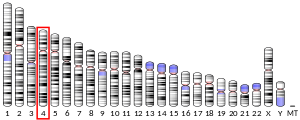From Wikipedia, the free encyclopedia
Protein-coding gene in the species Homo sapiens
TBC1 domain family member 9 is a protein that in humans is encoded by the TBC1D9 gene .[ 5] [ 6]
It is also known as MDR1 , GRAMD9 .
It is predicted to enable GTPase activator activity. It is also predicted to be involved in activation of GTPase activity and intracellular protein transport.[ 7]
^ a b c GRCh38: Ensembl release 89: ENSG00000109436 – Ensembl , May 2017^ a b c GRCm38: Ensembl release 89: ENSMUSG00000031709 – Ensembl , May 2017^ "Human PubMed Reference:" . National Center for Biotechnology Information, U.S. National Library of Medicine .^ "Mouse PubMed Reference:" . National Center for Biotechnology Information, U.S. National Library of Medicine .^ Islam TC, Asplund AC, Lindvall JM, Nygren L, Liden J, Kimby E, Christensson B, Smith CI, Sander B (Sep 2003). "High level of cannabinoid receptor 1, absence of regulator of G protein signalling 13 and differential expression of Cyclin D1 in mantle cell lymphoma" . Leukemia . 17 (9): 1880–1890. doi :10.1038/sj.leu.2403057 PMID 12970790 . ^ "Entrez Gene: TBC1D9 TBC1 domain family, member 9 (with GRAM domain)" .^ "TBC1D9 TBC1 domain family member 9 [Homo sapiens (human)] - Gene - NCBI" . www.ncbi.nlm.nih.gov . Retrieved 2023-11-28 .
Andersson B, Wentland MA, Ricafrente JY, et al. (1996). "A "double adaptor" method for improved shotgun library construction". Anal. Biochem . 236 (1): 107–113. doi :10.1006/abio.1996.0138 . PMID 8619474 . Yu W, Andersson B, Worley KC, et al. (1997). "Large-scale concatenation cDNA sequencing" . Genome Res . 7 (4): 353–8. doi :10.1101/gr.7.4.353 . PMC 139146 PMID 9110174 . Nagase T, Ishikawa K, Suyama M, et al. (1999). "Prediction of the coding sequences of unidentified human genes. XII. The complete sequences of 100 new cDNA clones from brain which code for large proteins in vitro" . DNA Res . 5 (6): 355–364. doi :10.1093/dnares/5.6.355 PMID 10048485 . Dias Neto E, Correa RG, Verjovski-Almeida S, et al. (2000). "Shotgun sequencing of the human transcriptome with ORF expressed sequence tags" . Proc. Natl. Acad. Sci. U.S.A . 97 (7): 3491–3496. Bibcode :2000PNAS...97.3491D . doi :10.1073/pnas.97.7.3491 PMC 16267 PMID 10737800 . Strausberg RL, Feingold EA, Grouse LH, et al. (2003). "Generation and initial analysis of more than 15,000 full-length human and mouse cDNA sequences" . Proc. Natl. Acad. Sci. U.S.A . 99 (26): 16899–16903. Bibcode :2002PNAS...9916899M . doi :10.1073/pnas.242603899 PMC 139241 PMID 12477932 . Brandenberger R, Wei H, Zhang S, et al. (2005). "Transcriptome characterization elucidates signaling networks that control human ES cell growth and differentiation". Nat. Biotechnol . 22 (6): 707–716. doi :10.1038/nbt971 . PMID 15146197 . S2CID 27764390 . Beausoleil SA, Jedrychowski M, Schwartz D, et al. (2004). "Large-scale characterization of HeLa cell nuclear phosphoproteins" . Proc. Natl. Acad. Sci. U.S.A . 101 (33): 12130–12135. Bibcode :2004PNAS..10112130B . doi :10.1073/pnas.0404720101 PMC 514446 PMID 15302935 . Rodríguez Nóvoa S, Barreiro P, Rendón A, et al. (2006). "Plasma levels of atazanavir and the risk of hyperbilirubinemia are predicted by the 3435C-->T polymorphism at the multidrug resistance gene 1" . Clin. Infect. Dis . 42 (2): 291–295. doi :10.1086/499056 PMID 16355344 .






